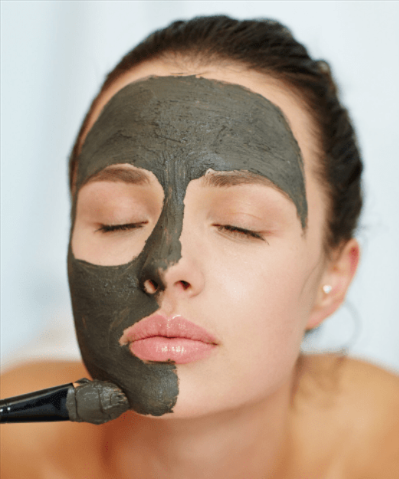Essential Tips and Insights for an Effective Nutrition Journey
As Korea continues to grow as a leading destination for medical tourism, many visitors seek to complement their treatments with the renowned K-Style Diet—a nutrition program based on Korean dietary principles emphasizing balance, natural ingredients, and fermentation. If you’re a medical tourist planning to start a K-Style Diet program in Korea, there are important factors to consider to ensure you get the best results safely and smoothly.
1. Understand What the K-Style Diet Entails
Before you begin, familiarize yourself with the core components of the K-Style Diet:
- Emphasis on whole grains like rice and barley
- Regular consumption of fermented foods (kimchi, doenjang) for gut health
- High intake of fresh vegetables and seaweed
- Lean protein sources such as tofu, fish, and poultry
- Use of traditional Korean herbs and spices
- Low in processed sugars and unhealthy fats
This diet differs significantly from many Western diets, focusing on balance and harmony rather than calorie restriction alone.
2. Consult with a Licensed Korean Dietitian
Many clinics offer personalized nutrition coaching tailored to your medical history, current treatments, and dietary preferences. A licensed Korean dietitian will:
- Assess your health condition and goals
- Customize your meal plans incorporating traditional Korean foods
- Monitor your progress and adjust the program as needed
- Provide guidance on safely introducing fermented foods
If you have allergies, digestive issues, or chronic illnesses, professional guidance is critical to avoid complications.
3. Be Prepared for the Role of Fermented Foods
Fermented foods like kimchi and fermented soybean paste are staples of the K-Style Diet and offer probiotics beneficial for gut health. However:
- If you’re not used to fermented foods, introduce them gradually to avoid digestive discomfort.
- Some fermented foods can be high in sodium, which may require moderation if you have hypertension or kidney issues.
- Discuss sodium intake and food restrictions with your dietitian.
4. Language and Communication
While many nutrition clinics in Korea offer services in English, some nuances of the K-Style Diet may be best conveyed in Korean. To ensure clarity:
- Confirm the availability of English-speaking dietitians or interpreters before booking.
- Prepare a list of questions and medical concerns beforehand.
- Use translation apps if necessary but rely on professional interpretation for critical information.
5. Align the Diet with Your Medical Treatments
Your primary medical treatments may influence your diet plan. For example:
- Post-surgical patients might need softer, easily digestible meals initially.
- Those undergoing cancer treatments may require nutrient-dense and anti-inflammatory foods.
- Patients with metabolic conditions might need tailored carbohydrate intake.
Coordinate with both your medical team and dietitian to avoid conflicting recommendations.
6. Cultural Adaptation and Food Preferences
The K-Style Diet is deeply rooted in Korean culture. Some dishes or ingredients might be unfamiliar or less appealing:
- Be open to trying new foods, but communicate your taste preferences.
- Many dietitians can suggest substitutions that still meet nutritional goals.
- Remember that Korean meals often include multiple small side dishes (banchan), offering variety.
7. Logistics: Booking and Scheduling
Medical tourists should consider:
- Booking your nutrition coaching sessions well in advance to align with your medical appointments and travel plans.
- Clinics may offer in-person, online, or hybrid sessions; choose what suits your schedule best.
- Some programs include health screenings or body composition analyses—ask if these are part of your package.
8. Budget and Costs
Nutrition coaching fees in Korea vary widely depending on the clinic’s prestige and services offered:
- Expect to pay anywhere from ₩50,000 to ₩200,000 (~$40-$160 USD) per session.
- Some clinics offer package deals or discounts for multiple sessions.
- Check what services are included: consultation, meal plans, follow-up, supplements, etc.
9. Post-Program Support
A key to lasting results is ongoing support:
- Many Korean dietitians provide online follow-up coaching to help you maintain your diet after returning home.
- Ask about access to recipe guides, meal prep videos, or community groups.
- Some clinics offer refresher sessions or seasonal program updates.
10. Be Realistic About Results and Commitment
Like any nutrition program, the K-Style Diet is a lifestyle change, not a quick fix:
- Results such as weight loss, improved digestion, or clearer skin take time and consistency.
- Combining the diet with regular physical activity and adequate sleep enhances benefits.
- Stay patient and communicate openly with your dietitian to adjust plans as needed.
Final Thoughts
Starting a K-Style Diet program in Korea as a medical tourist is a promising step toward holistic wellness, combining rich cultural heritage with modern nutritional science. By preparing adequately and working closely with professional dietitians, you can maximize your health benefits while enjoying an authentic Korean experience.
Planning ahead, respecting your body’s needs, and embracing the dietary culture will set you up for a successful and transformative nutrition journey during your medical stay in Korea.




